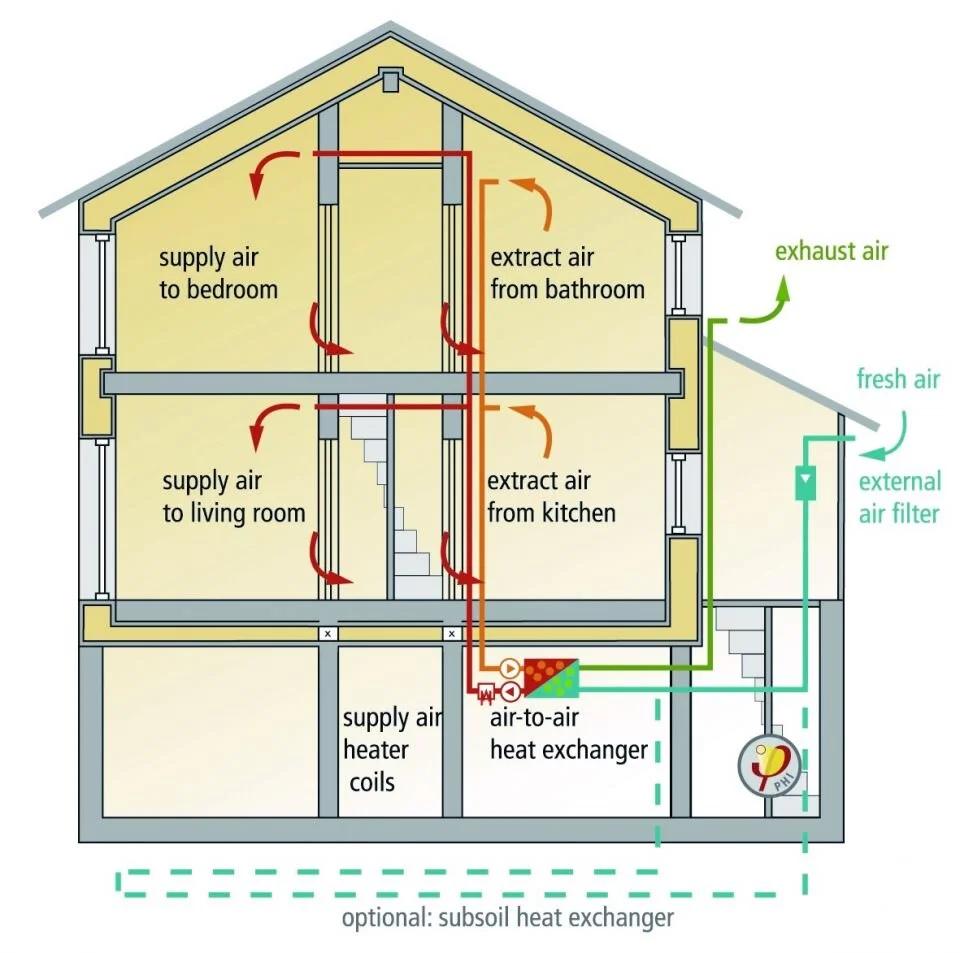Adequate Ventilation Strategy
Since Passive House projects are airtight, a ventilation system is needed to bring in fresh air and exhaust out built-up pollutants, odours, CO2, and moisture. During winter, this means dumping out warm air and bringing in cooler air that needs to be heated up again, which increases the heating energy. A Passive House ventilation system uses a heat recovery ventilator (HRV) to continuously remove stale or moist air and deliver fresh air. During this process, it extracts heat from the exhaust air and puts it into the incoming air without directly mixing the airstreams together. This way, all the heat in the exhaust air is not completely lost to the outside. For a Passive House HRV, at least 75% of that heat needs to be recovered.
For warmer summer months, most Passive House-certified ventilation systems also feature a summer bypass damper that diverts air around the heat recovery core. That way the system can still bring in fresh air but doesn’t recover heat when it’s not needed.
In dry locations, buildings without humidification in winter can leave the interior spaces at low interior humidity (under 30% RH), which leads to discomfort, potential health issues, and damage to interior materials. In these cases, an energy recovery ventilator (ERV) can be used. Unlike HRVs, which only transfer heat, ERVs can also transfer moisture from the outgoing exhaust to help maintain more-comfortable moisture levels in interior spaces. Occupants can also utilise natural ventilation (using cool summer breezes) from opening windows to exchange stale air by non-mechanical means and are encouraged to do so when it makes sense. Passive House designs utilise both methods to keep ventilation energy to a minimum. While Passive House projects can still be fitted with a heating system (such as air source heat pumps, electric baseboards, or boilers) having heat recovery in ventilation can greatly reduce the size, capacity, and maintenance needs of this equipment, shifting project costs from the mechanical systems to a superior building envelope.
Credit - Article and Image Sources: Fine Home Building, Passive House Buildings, Passive House Academy, Passive Haus, Level

